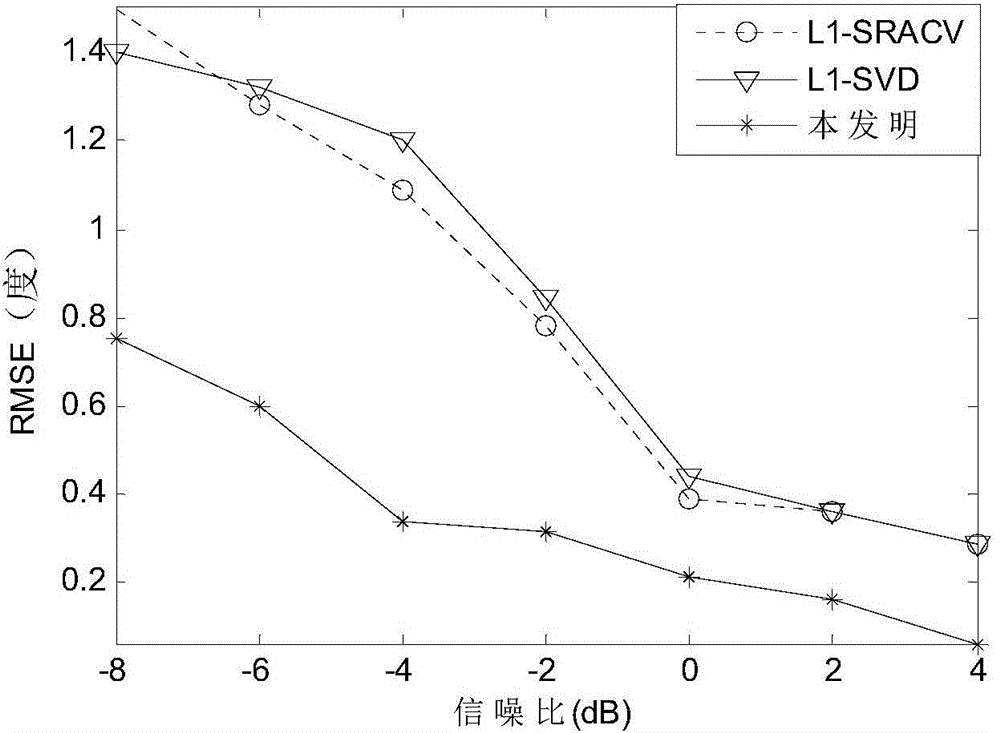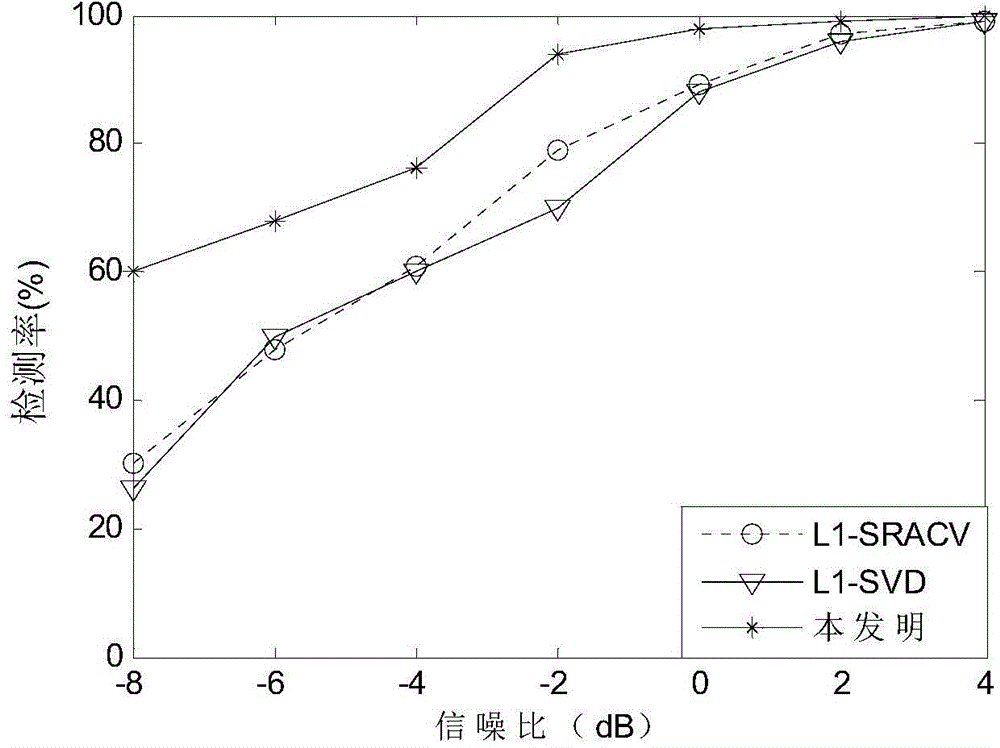Direction of arrival angle estimation method based on Sparse Bayesian learning
A direction of arrival, sparse Bayesian technology, applied in the field of signal processing, can solve the problems of not meeting engineering requirements, declining estimation performance, large estimation error, etc., to speed up parameter convergence, reduce estimation error, and be widely used. effect of value
- Summary
- Abstract
- Description
- Claims
- Application Information
AI Technical Summary
Problems solved by technology
Method used
Image
Examples
Embodiment Construction
[0035] The technical solutions and effects of the present invention will be further described in detail below with reference to the accompanying drawings.
[0036] refer to figure 1 , the implementation steps of the present invention are as follows:
[0037] Step 1: Use the antenna receiver to form a uniform line array.
[0038] Antenna receivers are placed every interval d, and a total of M are placed to form a uniform line array. Each antenna receiver is called an array element. Assume that there are K far-field narrowband signals incident on the uniform line array, and During the propagation of the signal, complex white Gaussian noise with a mean value of 0 is added, where M≥2, K≥1, 0<d≤λ / 2, and λ is the wavelength of the incident narrowband signal.
[0039] Step 2: Perform parallel sampling on the spatial signal to obtain the output signal Y(t).
[0040] The space signal is sampled in parallel by M antenna receivers in a uniform linear array at a fixed sampling frequenc...
PUM
 Login to View More
Login to View More Abstract
Description
Claims
Application Information
 Login to View More
Login to View More - R&D
- Intellectual Property
- Life Sciences
- Materials
- Tech Scout
- Unparalleled Data Quality
- Higher Quality Content
- 60% Fewer Hallucinations
Browse by: Latest US Patents, China's latest patents, Technical Efficacy Thesaurus, Application Domain, Technology Topic, Popular Technical Reports.
© 2025 PatSnap. All rights reserved.Legal|Privacy policy|Modern Slavery Act Transparency Statement|Sitemap|About US| Contact US: help@patsnap.com



